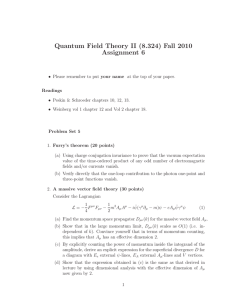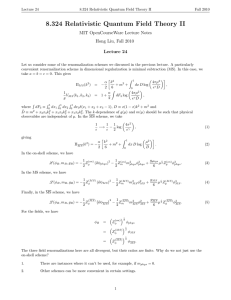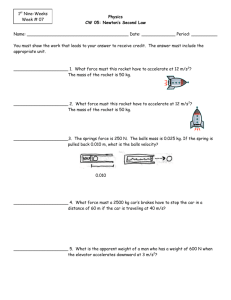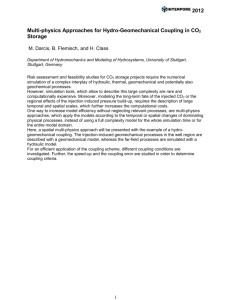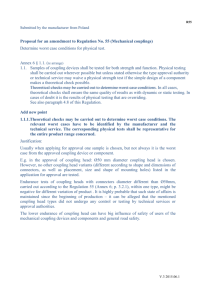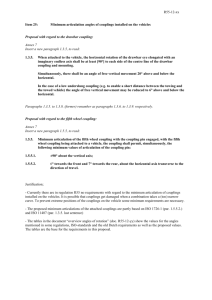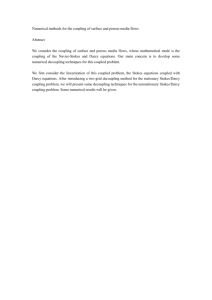9.7.4. The Running Coupling Constant
advertisement
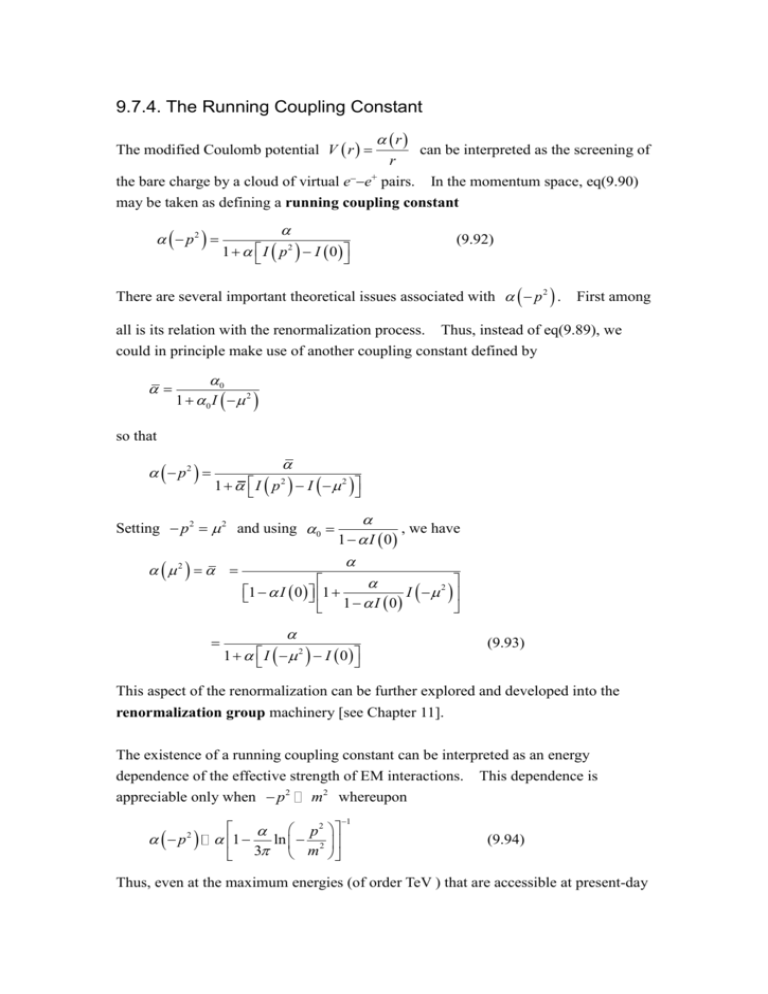
9.7.4. The Running Coupling Constant The modified Coulomb potential V r r can be interpreted as the screening of r the bare charge by a cloud of virtual ee+ pairs. In the momentum space, eq(9.90) may be taken as defining a running coupling constant p2 1 I p 2 I 0 (9.92) There are several important theoretical issues associated with p 2 . First among all is its relation with the renormalization process. Thus, instead of eq(9.89), we could in principle make use of another coupling constant defined by 0 1 0 I 2 so that p2 1 I p I 2 2 , we have 1 I 0 2 I 2 1 I 0 1 1 I 0 Setting p 2 2 and using 0 1 I 2 I 0 (9.93) This aspect of the renormalization can be further explored and developed into the renormalization group machinery [see Chapter 11]. The existence of a running coupling constant can be interpreted as an energy dependence of the effective strength of EM interactions. This dependence is appreciable only when p 2 m2 whereupon p 2 p 2 1 ln 2 3 m 1 (9.94) Thus, even at the maximum energies (of order TeV ) that are accessible at present-day particle accelerators, p 2 can increase by only 2% from its value ate zero energy. On the other hand, p 2 at p 2 m2e3 / m 2 e 411 . Although energy of this magnitude can never be reached in any conceivable experiment, there is cause for concern on theoretical grounds. In analogy of the pole of (9.90) at p 2 0 that indicates a real photon of zero mass, the pole in (9.94) suggests the existence of a particle of imaginary mass M i me3 / 2 , known as the Landau ghost. This M2 1 . Since the existence of such E2 particles is generally not acceptable, there seems to indicate some fundamental flaw in would be a tachyon with velocity v 1 QED. A related problem is that the infinite constant I 0 in (9.89) is positive. Thus, there is no positive values of 0 for which the renormalized is nonzero. This in turn means that the theory is basically non-interacting and thereby trivial. Now, this problem may not have physical significance since 0 has no direct physical meaning and the arguments were based on all sorts of approximations. Nonetheless, most people expect QED to break down at sufficiently high energies.
